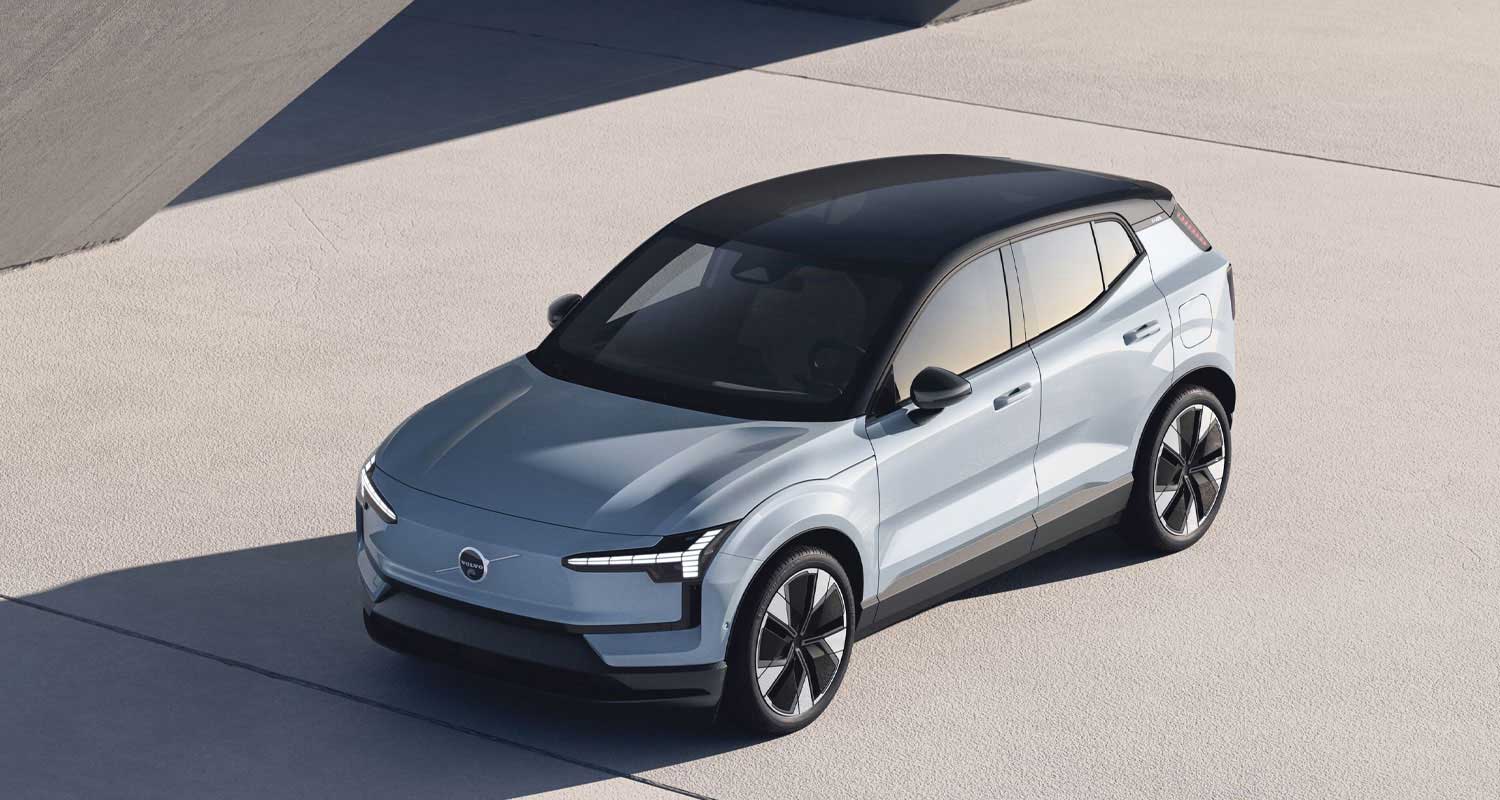 Convincing everyone to adopt a new technology can be a slog at first. The humble microwave oven, for example, took two decades of lukewarm sales to reach just a tenth of US households. But then came the 1980s, and quicker than you could say “Hot Pockets”, microwaves had spread to nearly every kitchen.
Convincing everyone to adopt a new technology can be a slog at first. The humble microwave oven, for example, took two decades of lukewarm sales to reach just a tenth of US households. But then came the 1980s, and quicker than you could say “Hot Pockets”, microwaves had spread to nearly every kitchen.
That fast part of the technology adoption curve is happening now with electric vehicles, according to a Bloomberg Green analysis of adoption rates around the world. When this analysis was first completed a year ago, 19 countries had passed what’s become a critical EV tipping point: 5% of new car sales powered only by electricity. This threshold signals the start of mass adoption, when technological preferences rapidly flip. Since then, five more countries have made the leap.
The newcomers — Canada, Australia, Spain, Thailand and Hungary — join a cohort that also includes the US, China and most of Western Europe. The trajectory laid out by these early adopters shows how EVs can surge from 5% to 25% of new cars in just four years.
Most successful new technologies — televisions, mobile phones, LED lightbulbs — follow an S-shaped adoption curve. Sales move at a crawl in the early adopter phase, then quickly once things go mainstream. In the case of fully electric vehicles, 5% seems to be the inflection point. The time it takes to get to that level varies widely by country, but once the universal challenges of car costs, charger availability and driver scepticism are solved for the few, the masses soon follow.
In the US, the EV tipping point didn’t arrive until late 2021 — relatively late for a country with its spending power. There were reasons for that delay. Americans spend more time in their cars than any other populace, and drivers demanded longer ranges than early models offered. Pickup trucks and large SUVs, which make up more than half of the US market, were also slow to electrify due to their massive battery needs.
Today, US EV sales are rising fast — up 42% in the second quarter compared to the same period a year ago — but haven’t quite matched the explosive trajectory of other countries that crossed over. That could change as Tesla, the world’s biggest EV maker, prepares to launch its Cybertruck, and as competitors roll out EVs under some of the most iconic American brands: Chevy Blazer and Silverado, Ford Explorer and F-150, Jeep Wrangler, and Ram 1500, to name a few.
Tipping point
A tipping point may be on the horizon for India, the third largest car market after China and the US. EVs made up 3% of new car sales in the country last quarter, after doubling in just six months. India’s homegrown car makers have been investing heavily in electrification, and Tesla CEO Elon Musk met with Indian Prime Minister Narendra Modi in June. Musk said he plans to enter the market “as soon as humanly possible”.
Countries that cross the tipping point have seen rapid rates of adoption, with a median sales growth of 55% last quarter compared to the same period a year ago. As with any new technology, growth rates will eventually slow as a market nears saturation — the top of the adoption S curve. There will always be holdouts. In Norway, the world’s EV pioneer, growth appears to be slowing after reaching 80% of new vehicles.
The analysis above is for vehicles that run on batteries only. Some countries, primarily in Europe, were quicker to adopt plug-in hybrids, which have smaller batteries backed by a petrol-powered engine. Other countries, including the US and China, mostly skipped hybrids and went straight to fully electric vehicles. If hybrids are included, the world sold more than 10 million plug-in vehicles last year, a figure that could triple by 2027, according to forecasts by BloombergNEF.
Because hybrids don’t require the same level of infrastructure or consumer commitment as fully electric cars, the early phase of adoption for them can be more erratic and full of false starts. A new hybrid model of a popular car might boost the share of plug-ins by a few percentage points without signifying a more widespread shift in consumer preferences.
 A consistent tipping point for this broader category of EVs wasn’t achieved until 10% of new vehicles were either hybrid or fully electric. At that point, sales in any given country tend to go mainstream. The US, Australia and Canada each came within fractions of a percent of crossing the 10% tipping point for plug-in sales last quarter. In the US, hybrid sales could pick up thanks to generous new incentives that went into effect this year.
A consistent tipping point for this broader category of EVs wasn’t achieved until 10% of new vehicles were either hybrid or fully electric. At that point, sales in any given country tend to go mainstream. The US, Australia and Canada each came within fractions of a percent of crossing the 10% tipping point for plug-in sales last quarter. In the US, hybrid sales could pick up thanks to generous new incentives that went into effect this year.
The concept of tipping points has often been used to describe price thresholds that trigger wider adoption. In the early days of renewable energy, for example, reaching the point at which it became cheaper to install new solar farms than to build new coal plants accelerated solar demand from utilities.
Sometimes sales volume itself can mark a turning point. After Tesla started selling the Model 3 in 2017, the company nearly sent itself into bankruptcy when it wasn’t able to make vehicles fast enough to drive down unit costs. Tesla executives determined that pushing production past 5 000 cars a week would kick off a virtuous cycle of declining costs and higher volumes, which is what happened.
Continued growth in EVs depends on the ability of traditional car makers and their suppliers to make similar blind-faith investments before demand has fully materialised. Factories must be retooled and supply chains reconfigured. To achieve the most savings, the entire vehicle must be redesigned with electrification in mind. Transition costs can be suffocating until sales go mainstream.
That means individual car makers also have a tipping point: the threshold after which EV sales become self-reinforcing. In Europe’s experience, once 10% of a car maker’s quarterly sales came with plugs, that share tripled in less than two years, on average.
Is the global transition to EVs inevitable?
So far, 90% of the world’s EV sales have come from the US, China and Europe. That means countries responsible for about a third of car sales globally have yet to pass the tipping point. Just four of the 20 most populous countries have made the pivot. Even if the circles of demand continue to widen, it’s uncertain whether miners will be able to keep up the pace for critical battery materials.
Still, global sales of new internal combustion engines peaked in 2017, and net growth for car sales is now driven entirely by EVs. That’s a trend that BloombergNEF forecasts suggest will continue until the petrol-powered car is a museum curiosity — whether that takes another decade or five.
Governments are also putting more thumbs on the scales. In the US, where the Biden administration is calling for EVs and hybrids to make up half of new vehicles by 2030, the 2021 Bipartisan Infrastructure Law and 2022 Inflation Reduction Act are directing hundreds of billions in public and private funding into everything from highway charging networks to battery recycling plants. The US battery pipeline to 2030 increased 67% in the last year alone and has caught up with Europe, according to Benchmark Materials.
Treacherous
Forecasting technology adoption is treacherous business. Even the most careful outlooks can be knocked off course by supply-chain disruptions, economic shifts, politics, bankruptcies and popular culture. The advantage of the tipping-points approach is that it reveals a range of adoption curves that are at least known to be possible — because they’ve already occurred.
Applying the framework to the entire planet, the EV tipping point was passed in 2021. If the trends hold true, the rest of this decade will be remembered for doing for electric cars what the 1980s did for the microwave oven. — Tom Randall, with Samuel Dodge, (c) 2023 Bloomberg LP

